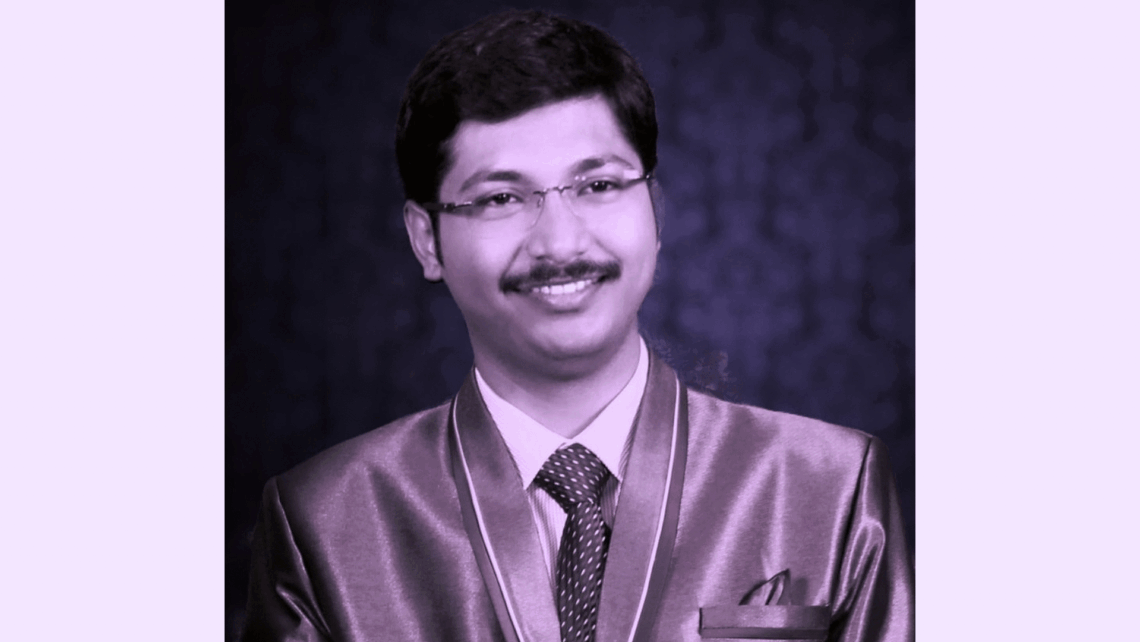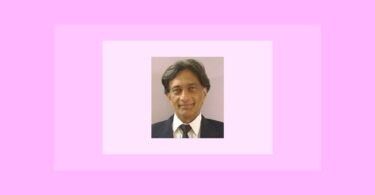Dr. Amitava Sinharay is interviewed by Alan V. Schmukler. Dr. Sinharay is a member of a family that has three generations of homoeopathic physicians and has been involved in homoeopathy for over 100 years. His writings have been published in various journals and he has also been involved in research.
A.S. You come from a family with three generations of homoeopathic physicians. How did you decide to follow in the footsteps of the other doctors in your family?

Dr. Sinharay: Yes, it is true that my family has been associated with homoeopathic treatment for three generations. And the first person in this homoeopathic addition to the family was my grandfather, Dr. Prabhas Chandra Sinharay, who was a freedom fighter as well as a homoeopathic physician and played a leading role in the promotion and spread of homoeopathy at that time.
Inspired by him, later my Uncle Dr. Adwaitya Kumar Sinharay and my father Dr. Sankari Prasad Sinharay both completed their DMS degree in Homeopathy and successfully practiced homeopathy.
I have personally seen my grandfather’s treatment from a very young age. Later I joined and worked with father’s medical practice. The homeopathy system of medicine has been closely associated with me since childhood.
I have seen with my own eyes how various complex and rare diseases are cured simply by homoeopathy. This later greatly inspired me to come to homoeopathy. Long before attending homoeopathic medical college, as I was intimately involved with this system of medicine through my family, a special fondness developed, which later became a major motivation to study homoeopathy and practice medicine myself.
A.S. In the last 15 years various approaches to case taking and analysis have been introduced. How would you describe your approach?
Dr. Sinharay: Whatever new approach to case-taking may come, I do not think there is any need for any new approach other than that described in Hahnemann’s instructions. I have no personal opinion on this. According to homeopathic principles, a physician should be extremely careful in taking descriptions of a patient’s illness (not the disease).
Emphasis should be placed on the totality of symptoms, the patient’s main problem and his surrounding environmental conditions, and the moral and character traits of the main problem are also very useful. There is no need for how many symptoms I have written in numbers while doing case taking. For me, quality symptoms mean the most important, uncommon, peculiar symptoms, even if it is only one, then the medicine can be selected depending on it.
A.S. What type of cases do you find most challenging, and why?
Dr. Sinharay: An illness that is experiencing major difficulties in recovery will be challenging. Yes, such difficulties are often encountered in practice. But it is not correct to say that any particular disease is not improving or becoming challenging.
The most challenging cases are those which have been treated un-homoeopathically for many years. In those cases in which have been applied external medicine for a long time, every symptom has been suppressed. In such cases it becomes more difficult to find out the true symptoms.
A.S. Most homeopaths have cases that they especially remember. Can you summarize one of your most memorable cases, that was especially rewarding?
Dr. Sinharay: Yes, in practice, many such cases are embedded in the mind. The case I am recalling at the moment is an old ulcer. It was on the top of the foot of a female patient (age about 26 years) which was not healing at all. When the case came to me it had already been treated by various allopathic doctors with various antibiotics.
The sores did not get better with allopathic treatment, even after many antibiotics.
Initial observation did not find any problem and I gave symptomatic medicine. But I was increasingly disappointed when I saw that even the well-chosen medicines were not responding. This was increasingly worrying me.
About to give up, lastly I used Anthracinum and Gunpowder alternately. And what surprised me was that the ulcer was almost healed within a week. And with these two medicines this patient recovered.
How would you rate homeopathy education in India. Do students coming out of homeopathy college have sufficient knowledge? What would you change or improve?
Dr. Sinharay: The Indian homoeopathic education system has to be given 10 out of 10 if rated. The homoeopathic education system here is well structured and developed. Students have to pass the higher secondary science and appear in the All India NEET Examination, and if they pass it successfully, they will get an opportunity to study homoeopathy (BHMS) in any homoeopathy medical college in India with proper counseling. Besides, there is no other way to get admission.
There is no way to get admission in homoeopathy without higher secondary science, so there is no question of coming from somewhere else. If there is anything to change in the educational system, then I would first say that several subjects need to be included in post-graduation (M.D.) Already paediatrics is going on and some more clinical subjects need to be included urgently for the betterment of homoeopathy. I think homoeopathy would be greatly improved if courses were introduced in Gynaecology, Rheumatology, Dermatology, Radiology, ENT, and most importantly Oncology.
A.S. How important is it for the general population to have a basic familiarity with of homeopathy? How could the public be better educated about the benefits of homeopathy?
Dr. Sinharay: Common people in India are quite closely associated with homoeopathy. Even today, homoeopathy stands its ground because the general public knows very well enough that it is a beautiful, reliable and effective treatment.
Homoeopathy has progressed in its own way through the hands of renowned homoeopathic doctors and the way common people are benefiting from their treatments. Common people resort to homoeopathy because they benefit from it. There is no need to redefine the benefits of homoeopathy, at least as of today. It can be said that homoeopathy is now chosen as the first choice of treatment by most of the people.
A.S. Thank you for sharing with us today, Dr. Sinharay.






